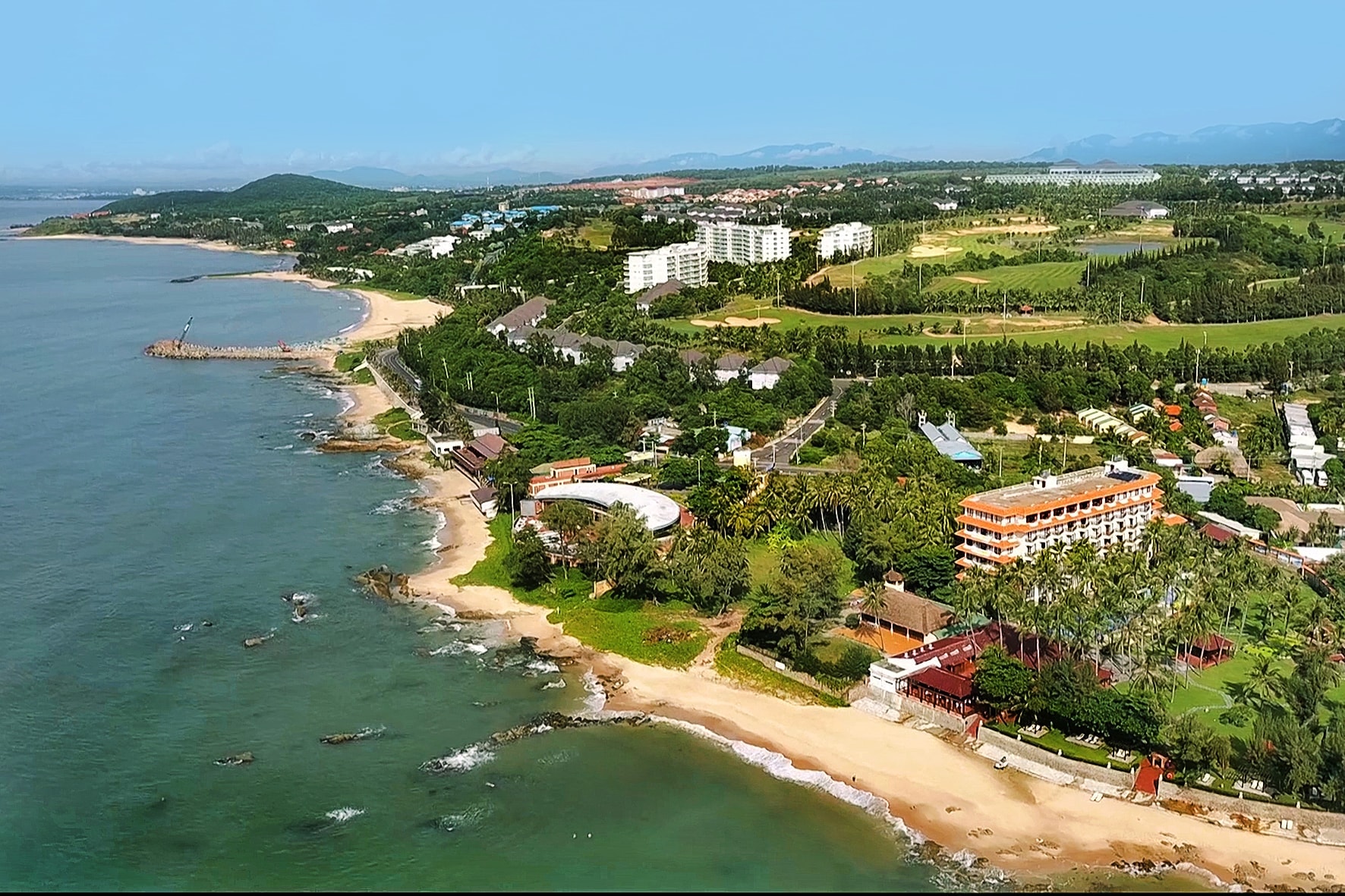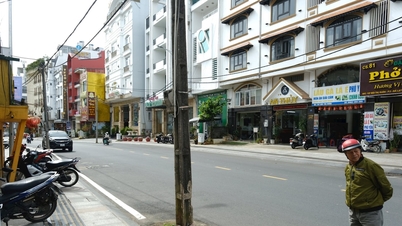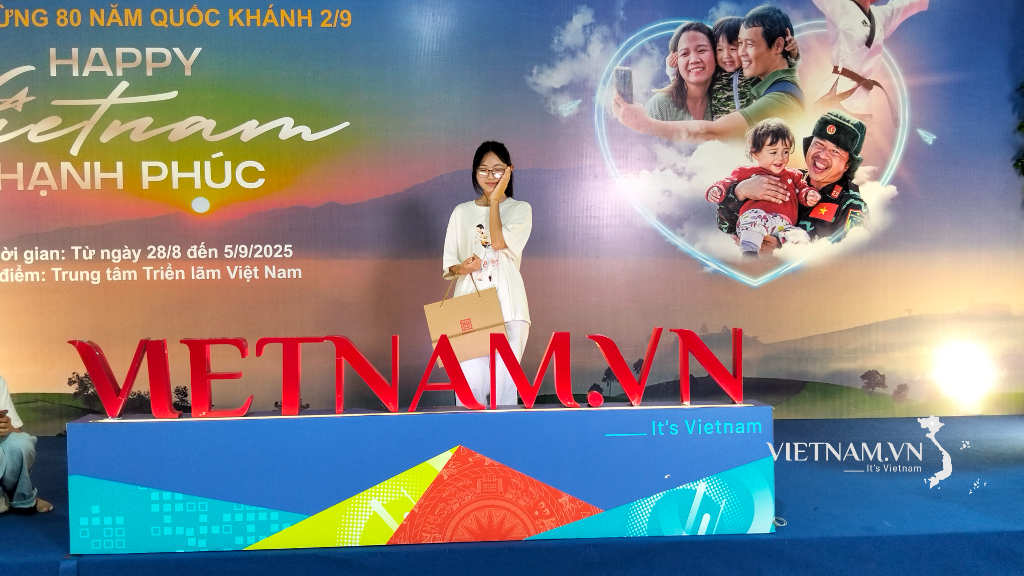
After the merger, Lam Dong province has a natural area of over 24,000km² and a population of over 3.9 million people. The new Lam Dong is not only a locality that has expanded in scale, but also a harmonious combination of three unique ecological regions: plateau, midland and coastal. The event not only changes the administrative map but also opens up a multi-layered tourism space with increased potential.
Lam Dong province currently has 3 special national relics, 57 national relics, 80 provincial relics out of a total of 140 relics of all kinds, creating a huge potential for cultural tourism.
The West of Lam Dong (formerly Dak Nong) is the epic of mountains and forests, of the UNESCO Global Geopark, while preserving the wild beauty of Ta Dung Lake, Nam Nung... The center of Lam Dong is still the "muse" of the plateau with a mild climate, poetic landscapes and the brand name of Da Lat of thousands of flowers. The East of Lam Dong is the coastal region of Binh Thuan, formerly with 192 km of coastline in Doi Duong, Phu Hai, La Gi Mui Ne, Phan Thiet, and Phu Quy archipelago. The three regions blend into a panoramic picture of a miniature Vietnam, both wild and modern, both rustic and full of life. This resonance creates a new tourist map, where visitors can touch the forest, swim in the sea, see flowers and explore indigenous culture in just one journey.

The poetic Tuyen Lam Lake. (Photo: Lam Dong Provincial Portal)
Green tourism - a pillar of sustainable development
In the context of the world moving towards green development, Lam Dong is choosing green and smart tourism as its main strategy. Mr. Ho Van Muoi, Chairman of the Provincial People's Committee, said: "Lam Dong will comprehensively develop a green, ecological, cultural, and community tourism ecosystem, focusing on people and nature". Accordingly, the province focuses on developing tourism associated with heritage conservation, reducing plastic waste, using renewable energy, and promoting digital transformation of tourism with smart tourism platforms, VR360, and multilingual virtual assistants to serve tourists.

Dak Glun Waterfall. (Photo: Ngoc Bao)
Not only exploiting internal resources, Lam Dong also identifies regional connectivity as the key to expanding development space. The Ho Chi Minh City - South Central Coast - Central Highlands tourism corridor is being formed, connecting Lam Dong with key tourism centers of the region.
Along with that, a series of major infrastructure projects such as Dau Giay - Lien Khuong expressway, Phan Thiet airport, Lien Khuong airport upgrade and Phu Quy seaport will bring tourists to Lam Dong faster and more conveniently.
Lam Dong continues to restructure the service and tourism industry, creating new growth drivers by diversifying products and developing high-quality tourism types, applying digital technology. The province prioritizes typical models such as agricultural tourism, music tourism, adventure tourism, sports, resort tourism, medical tourism, culture and MICE tourism, aiming to build a unique and competitive tourism brand in the region.
At the same time, the locality attracts investment in urban, commercial, service, tourism and high-end resort complexes associated with entertainment, recreation and sports systems. The focus is on developing key tourist areas such as Mui Ne, Tuyen Lam Lake, Ta Dung, Dak Nong UNESCO Global Geopark, Phu Quy Island, to invite strategic investors with brands and potential to participate in the creation.
Keeping the cultural fire burning - awakening emotions
Amidst the journey of strong development, Lam Dong still maintains its identity with typical cultural values: Central Highlands Gong Cultural Space, Langbiang Biosphere Reserve, Nguyen Dynasty Woodblocks, along with many festivals, craft villages and Cham cultural heritage.

Mui Ne beach. (Photo: Lam Dong Province Investment, Trade and Tourism Promotion Center)
With a strategic vision, a solid infrastructure foundation and a multi-layered cultural identity, the new Lam Dong is not only a geographical merger, but also a convergence of aspirations and opportunities. Lam Dong tourism industry aims to welcome 25.75 million visitors (an increase of 12% compared to 2025). Lam Dong focuses on expanding international visitors from Europe, North America, the Middle East, Northeast Asia and ASEAN, while ensuring safety, security, environmental sanitation, and building the image of friendly and civilized Lam Dong people.
One journey, three experiences – that is not just a tourism slogan, but an invitation of a land that is blending to reach out in the new era.
Featured Destinations
Lam Dong of thousands of flowers - Colors of Da Lat plateau
The heart of the Lam Vien - Di Linh plateau is Da Lat, Bao Loc, Cau Dat, where the beauty of "city in the forest - forest in the city" is evident. The cool climate all year round, the lakes and waterfalls such as Tuyen Lam, Prenn, Pongour create the name "land of mist and flowers". Tourists can pick strawberries, enjoy tea, sip Arabica coffee on Cau Dat hill or immerse themselves in the Da Lat Flower Festival....
Green, smart Da Lat is moving towards sustainable development, while Bao Loc is emerging with silk, tea and new resorts along the Dau Giay - Lien Khuong highway.
Lam Dong Great Forest – The breath of forest and rock
The Ta Dung, Nam Nung, Krong No (formerly Dak Nong) region is a paradise for geological tourism, trekking and exploring the M'nong culture. At Dak Nong UNESCO Global Geopark, visitors can admire 41 heritage sites of "symphony of fire and water", along with the majestic Chu Bluk volcanic cave system. In the middle of the winding Serepok River are the majestic Dray Sap, Dray Nur, and Gia Long waterfalls, symbols of the vitality of the Central Highlands. The sound of gongs, epics, and customs of the M'nong, Ede, and Ma create a unique sound of the great forest.
Lam Dong blue sea - Mui Ne dawn waves
From the highlands to the coast, the East of Lam Dong opens up a space of blue sea, white sand, and golden sunshine. Mui Ne, Phan Ri, La Gi to Phu Quy, the modern beaches and resorts turn this place into the "resort tourism capital" of Vietnam. The sites of Bau Trang, Ta Cu Mountain, and Po Sah Inu tower bear the imprint of ancient Cham culture combined with modern life.
Source: https://vtv.vn/lam-dong-1-hanh-trinh-3-trai-nghiem-100251110193519068.htm





![[Photo] Prime Minister Pham Minh Chinh chairs a meeting on housing policy and the real estate market.](https://vphoto.vietnam.vn/thumb/1200x675/vietnam/resource/IMAGE/2025/11/11/1762838719858_dsc-2107-jpg.webp)
![[Photo] Chu Noodles - the essence of rice and sunshine](https://vphoto.vietnam.vn/thumb/1200x675/vietnam/resource/IMAGE/2025/11/11/1762846220477_ndo_tl_7-jpg.webp)




























































































![Dong Nai OCOP transformation: [Article 4] Reaching national standard products](https://vphoto.vietnam.vn/thumb/402x226/vietnam/resource/IMAGE/2025/11/11/1762825820379_4702-cac-san-pham-trai-cay-chung-nhan-ocop-nongnghiep-174649.jpeg)


![Dong Nai OCOP transition: [Article 3] Linking tourism with OCOP product consumption](https://vphoto.vietnam.vn/thumb/402x226/vietnam/resource/IMAGE/2025/11/10/1762739199309_1324-2740-7_n-162543_981.jpeg)






Comment (0)